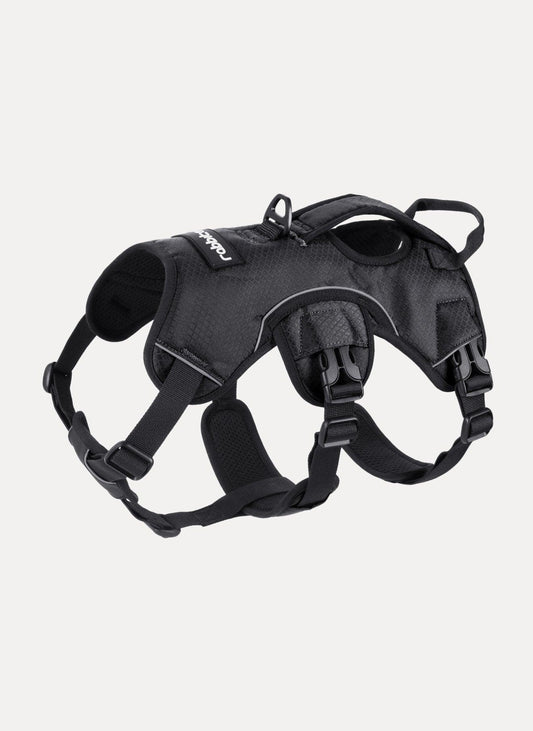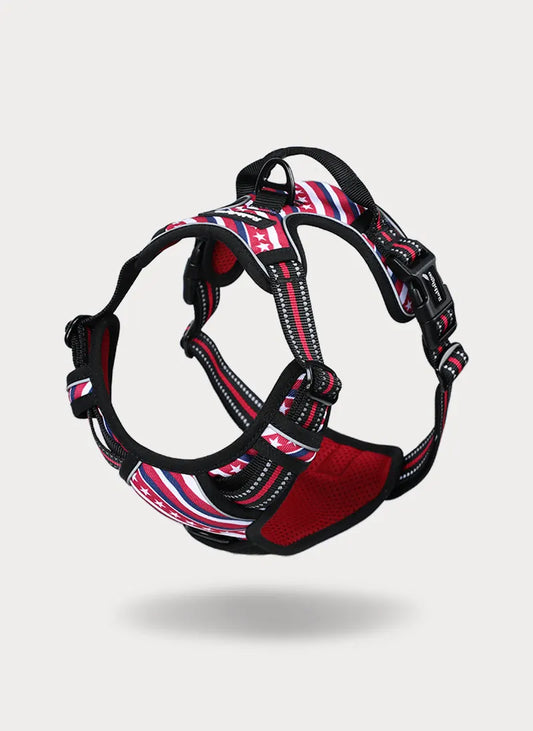How to Train a Dog to Walk on a Leash?
Are you also frustrated with your dog leash-walking skills? We hate to break it to you, but the issue may be the training, not the dog skills. Yes, this is possible and there’s no need to be ashamed of it. Every pet parent, once there, where you are now (in the learning phase).
We’ve decided to help you by sharing how to train a dog to walk on a leash properly and safely. We’ll discuss each step in detail below. So buckle up and get ready for dog leash training!
Btief Summary — Dog Leash Training for Walks
- Introduce the leash to your dog by placing it in an area where your dog is likely to come. Let your dog sniff and explore the leash, then put the leash on (always offer treats).
- Once your dog becomes comfortable wearing a leash, start training at home. Train your dog to respond to you when you use a clicker or your voice, like saying, “Hey Casper.” if your dog responds back, and comes to you, reward them again with their favorite treat.
- Take the training outside in a park. Walk beside your dog, maintaining their attention by using your clicker or voice, and continue rewarding them for good behavior. Follow this routine until your dog consistently responds to your cues and walks calmly beside you.
Step-by-Step Guide to Training a Dog Walking on a Leash
Below is the step-by-step guide to training a dog walking on a leash. Make sure to read each step carefully and take notes so you can follow the right practices.
Step #1: Choose the Right Dog Leash
The first step for dog leash training is to choose the right leash. Many times, dogs become irritated because of the poor quality of the leash, which can interfere with their training progress. This is why it’s important to choose the best leash for dogs, like the Rabbitgoo Tactical 2 Padded Traffic Control Handles Dog Leash.
Our leash is made of durable polyester fabric, with a secure lock and rotatable hook design. As a result, it provides the dog enough freedom to move comfortably while maintaining control during walks.
Step #2: Introduce the Dog Leash
Once you have the best leash for the dog, introduce it. Do this step carefully; if the leash isn’t introduced with positive reinforcement, your dog may become hesitant to come near it.
The best way to do this is to place the leash in your dog's favorite area. Let your dog sniff and explore the leash, and when they come near it, offer your dog a favorite treat. This way, your dog will not develop any fear about the leash.
Step #3: Start the Training Indoor
The third step is to start the training indoors in the play area, yard, or anywhere your dog feels comfortable. Remember, this step is about teaching your pet to focus on you whenever you call them or use a clicker. Although you can start this training at any age, the suitable time to train dogs for this is when they’re ten weeks (3 to 4 months) old.
For this step, put the leash on the dog and use a clicker. Click it and encourage your dog to come to you, rewarding them with treats to reinforce positive behavior.
Note: Do not force a dog to come to you, or else they’ll associate the sound of the clicker with pressure instead of a positive experience.
Step #4: Take Training to Park
When you feel your dog can now come to you with your voice or the sound of a clicker, it’s time to move outside. Choose a peaceful park or area with a little distraction so that the dog can focus on you and the training process.
Start with short sessions, allowing your dog to acclimate to the new environment. Use treats and praise to reward them for staying close and responding to your commands.
As your dog becomes comfortable, run (not too fast), or move in circles around your dog and let your dog follow you. If they follow attentively, reward them with a treat. This helps train your dog to focus on you while walking. Practice this step a few times a week until your dog consistently stays engaged and attentive during walks.
Step #5: Be Consistent
The last and most important step, be consistent. Consistency is key to successful training. Use the same commands, rewards, and techniques every time you train, helping your dog understand what’s expected of them.
Establish a regular training routine and incorporate leash training into your morning walks to make your dog more comfortable with the process.
BONUS TIPS --- For Successful Dog Leash Training
Here are some additional dog training tips for a successful dog leash training experience. These tips will help you reinforce positive behavior and make your walks more enjoyable for both you and your dog:
Monitor Your Dog’s Body Language
Always monitor your dog’s body language and check for signs of stress. Remember, your motive is to provide training, not to stress them out. If you feel your dog is exhausted because of training, stop immediately. You can always continue training the next day.
Avoid Pulling or Yanking on the Leash
Try your best to avoid pulling or yanking on the leash. It’s because pressure on the leash can cause discomfort or stress for the dog, which may lead to negative associations with walking. Instead, if your dog starts to pull, stop walking and wait for them to calm down before continuing.
Use Consistent Commands and Signals
Use consistent commands and signals to avoid confusion for the dog. For example, if you’ve decided to use a clicker, stick with it throughout the training. If you use verbal cues, keep them simple and consistent, like “heel” or “stop” for clear communication.

Final Thoughts
There you’ve it—a successful step-by-step guide about dog leash training. You can follow all the steps mentioned and train your dog to walk on a leash; it’s not difficult.
Just make sure the leash you’re using is actually made of good quality. We don’t want you to risk your dog using every other leash. The best leash is made of high-quality material and has a rotatable secure lock, like our Tactical 2 Padded Dog Leash from Rabbitgoo.
We also have a large collection of other dog accessories, like harnesses and dog beds, to further improve your pet’s experience and overall comfort. So don’t forget to check them out.








